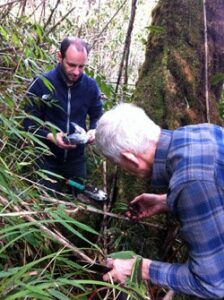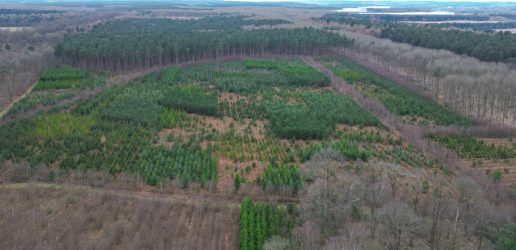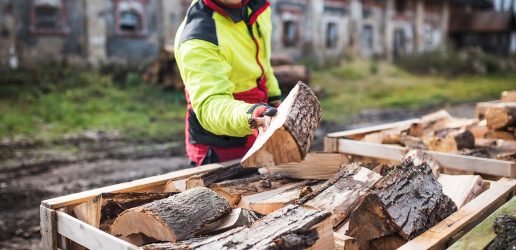
In March 2017, Dr Joan Webber and Prof Clive Brasier took part in an expedition to north Vietnam as part of the EU Horizon 2020 POnTe project – an international collaboration of scientists working to understand and minimise the risk of the introduction of major crop and tree diseases in Europe. The trip was led by Dr Thomas Jung who heads the recently established Phytophthora Research Centre in the Czech Republic and involved collaboration with the Vietnamese Academy of Forest Sciences in Hanoi.
The expedition aimed to substantiate the findings of a previous survey in the area from which Forest Research were sent materials for analysis. From this initial analysis it was possible to confirm that a significant number of the samples collected contained P. ramorum and that the P. ramorum found in the area is not likely to be from a currently known lineage. In particular the new expedition wanted to determine the plant species that are naturally infected by P. ramorum and which might act as hosts of the pathogen.
The expedition concentrated survey efforts in the Fansipan/Sapa area, a plant-diverse region with over 1,600 plant species and known to be particularly rich in rhododendron and plants within the families Fagaceae, Magnoliaceae and Lauraceae which, based on European and American experience, are known to include hosts which harbour P. ramorum. Isolations of the pathogen were made from plant material sampled in that area and based on appearance alone, some of those cultures appear likely to be P. ramorum. However, further analysis is required to determine if they are a genetic match with any of the known clonal lineages of P. ramorum recently introduced into Europe and North America.
The survey is the most recent of several carried out over more than a decade in the search for the origin of P. ramorum (and its close relative P. lateralis); previous surveys have included the Himalayas, Taiwan and Yunan, China. The finding of P. ramorum in northern Vietnam has confirmed speculation that it might originate from East Asia, but the pathways which have allowed the pathogen to move out of this geographical area and introduced it to Europe and America still remain a mystery. However, the findings emphasise the importance of such surveys for improved global biosecurity and to support the analysis of the risk posed by plant diseases.
Find out more about Forest Research’s work on threats from Phytophthora.
Related pages
Recent News
View All news
Seventeen coniferous tree species show early promise for future commercial timber production in the UK
Researchers have set up a network of nine large scale experiments across the UK to test the suitability of 17 tree species as potential alternatives for future commercial timber production.
Forest Research are looking for people involved in the harvesting, processing, transport, import, or trade of firewood in Scotland to complete an important survey.

New guide to help local authorities conduct a people survey on the social value of their treescapes
A new step-by-step guide to help local authorities, charities and civic societies carry out a people survey to understand social and cultural values related to trees in their area, is now available.

Seventeen coniferous tree species show early promise for future commercial timber production in the UK
Researchers have set up a network of nine large scale experiments across the UK to test the suitability of 17 tree species as potential alternatives for future commercial timber production.
Forest Research are looking for people involved in the harvesting, processing, transport, import, or trade of firewood in Scotland to complete an important survey.

New guide to help local authorities conduct a people survey on the social value of their treescapes
A new step-by-step guide to help local authorities, charities and civic societies carry out a people survey to understand social and cultural values related to trees in their area, is now available.

